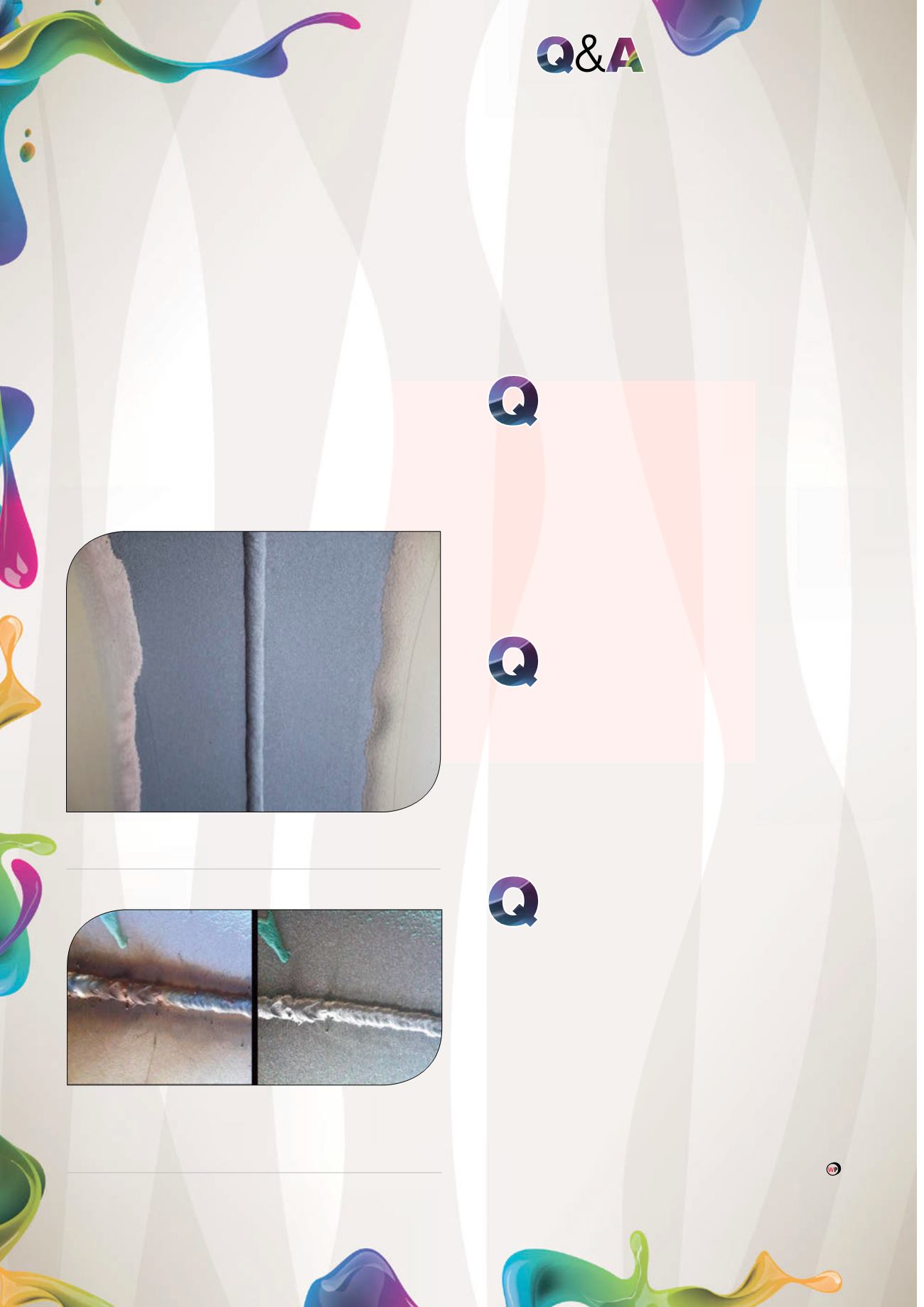
COATINGS
and a cleanliness level that meets the requirements of
the manufacturer. To ensure the protective coating can
effectively prevent internal corrosion and deterioration,
several factors must be in place, including the coating’s
ability to bond to the pipe substrate. For instance, the
surface must be free of hydrocarbons, such as oil and
grease, and salt contamination tests and surface profile
measurements should be taken and recorded for quality
assurance.
Surface preparation should not be underestimated:
the US alone has an estimated 1.2 million miles of natural
gas pipelines and 174 000 miles of petroleum product
pipelines, making internal corrosion prevention an
important part of pipeline corrosion management.
Renato Sanchez, CRTS Engineering Manager
Proper surface preparation is the foundation of any
reliable corrosion coating system. Without adequate
cleaning, a surface cannot be coated properly. When a
surface is not properly cleaned, applied coatings will
stick to mill scale or oxide layers, rather than to the true
substrate. Additionally, having a properly applied anchor
profile provides the roughness and interface area to
maximise the adhesion of the coating. CCSI’s CoatCheck™
robot helps inspectors verify surface preparation, as well
as monitor any variation or abnormality. This provides
inspectors with useful data, which in turn can be reviewed
with the applicator so that coating failures can be
prevented.
Rick Kimpel, CCSI Engineering Manager
Why do companies carry out
coating adhesion tests?
We perform adhesion tests so that our
customers get the best protection possible, ensuring that
the coatings can withstand normal handling and backfill
operations. The best coating in the world is completely
irrelevant if it does not maintain good adhesion with the
pipe. Normal pipe handling processes should not have any
detrimental effect on the coating.
Another important reason to focus on adhesion
testing is to verify that a coating will not disbond from
the substrate in the event of a holiday.
Rick Kimpel, CCSI Engineering Manager
How can you prevent internal
corrosion?
CCSI offers a number of ID coating solutions at
both branches. Additionally, CCSI’s sister company CRTS
offers ID coating solutions for field joints, so that they
can enjoy the same protection as the line pipe.
When coatings are not enough, a corrosion monitoring
system from a company like Corrpro can help prevent
corrosion and extend the life of the pipe. Proper
monitoring can help identify and mitigate corrosion
issues.
Rick Kimpel, CCSI Engineering Manager
What role do defect assessment
tools play in coatings integrity?
Defect assessment tools, such as CCSI’s
CoatCheck™ robot, play an important role in verifying
coating integrity. By providing repeatable, traceable and
non-editable results, CoatCheck™ maintains the accuracy
of the field joint coating data throughout the entire
process. Additionally, the results are tabulated on a daily
basis, allowing the inspectors to detect any changes
in production quality at a glance. This can also assist
operators to fine-tune their processes to reduce operating
costs and variability. Since the coating data is directly
correlated with the GPS location data, there is much less
time spent looking for any particular field joint, should
the need arise.
Rick Kimpel, CCSI Engineering Manager
Figure 4.
Robotic inspection reveals dirt, weld spatter and
other anomalies that should be cleaned prior to coating. The
photo on the left shows a dirty weld bead; the right photo
shows the difference after being cleaned. The “dirt” is not
easily visible to the naked eye.
Figure 3.
A thorough inspection alerts operators of potential
welding issues that could be detrimental to the coating
application.
52
SEPTEMBER
2014


